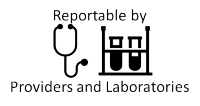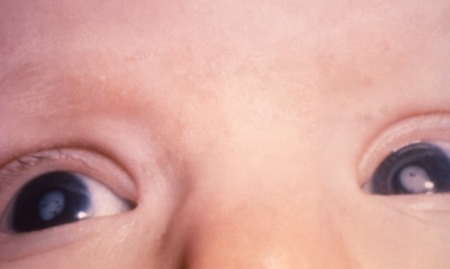Congenital Rubella Syndrome


Infectious agent: Rubella virus
Description of illness: Congenital rubella syndrome (CRS) is an illness that can occur in infants as a result from maternal infection with the rubella virus during pregnancy. When rubella infection occurs during early pregnancy, serious consequences-such as miscarriages, stillbirths, and sever birth defects can result. The risk of congenital infection and defects is highest during the first 12 weeks of gestation and decreases after the 12th week of gestations. Common congenital defects of CRS include: cataracts; congenital heart disease; hearing impairment; and developmental delay. Infants with CRS often present with more than 1 sign or symptom consistent with congenital rubella infection. Infants may also present with a single defect with hearing impairment being the most common single defect.